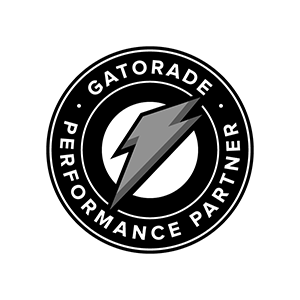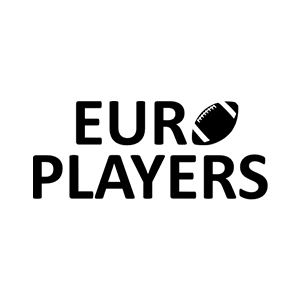Building Blocks: 4-2-5 G Defense
As today's game continues to shift to a more pass-driven approach, the traditional 3-4 and 4-3 sets are utilized less and less. More Defensive Coordinators are implementing defensive sets that place more Defensive Backs on the field, in lieu of the traditional Linebackers. This creates a mismatch opportunity for Offensive Coordinators if they are able to capitalize on the smaller defenders now playing around the box. In most of these sets, there remain 1-3 hybrid players that fit the mold of a traditional Linebacker that can support in pass coverage, yet are still effective in run defense.
In this article, we cover some of the responsibilities, run keys, and two specific blitzes for Linebackers in a defensive pass formation. We will specifically look at the reaction of the Linebackers when their run key, the offensive guard, executes a specific action: pull block or zone block. The formation used for this example is the 4-2-5 G Defensive Formation, used by Coach Pat Fox at Pontiac Notre Dame Prep HS (MI).
Using the 4-2-5 G Defensive Formation, Coach Pat Fox highlights where the Linebackers are aligned and how they respond to the actions of the Guard and Tackles.
Defensive Linebacker Alignment and Run Keys
OFFENSIVE GUARD PULL BLOCK ACTION
The first read for both Linebackers is a pull block from either Guard/Tackle. If either Linebacker sees their offensive Guards or Tackles pull, they will run the crease to the A Gap. The Linebacker's responsibility is dependent on the placement of the ball. If the ball is on his outside, the Linebacker will attack the 9 tech area (Force), however, if the ball is on his inside, he will play near the 1 tech (Spill). Both Linebackers' responsibilities are interchangeable, so there is not a requirement for the Linebackers to flip sides dependent on the strength of the offensive formation. Communication between the Linebackers is very important. When one Linebacker identifies the pull block, he must inform the other Linebacker that a pull is coming. That will allow that Linebacker to react and protect himself from his play-side Tackle and work himself back in on the play.
OFFENSIVE GUARD ZONE BLOCK ACTION
If there is no pull from either side, then the Linebackers are two-gap players with a “31” assignment, meaning that if the ball is outside of them, they play the gap designated as the first number—in this case, the three-tech area. If the ball would be inside of the Linebackers, then they would play the technique area designated as the last number, in this case, the one tech area. The read when there is no pull block is very simple, however, they must be aware that a pull block may be coming from the backside of the play. This is why it is very important for the Linebacker to listen for any "PULL" call from the other Linebacker.
Inside Linebacker Blitzes
The first blitz is called “A 3 Seam,” in which the Linebackers execute a blitz from depth into the A gap, while the Tackles spark to the outside of the B gap and the ends stick the Tackles to the escape point. The second blitz is “B 3 Seam.” It's the same setup, but this time the Linebackers blitz the B gap and the Tackles spark outside the A Gap. Ends have some responsibilities.
The last two blitzes include stunts from the Defensive Line. They are called “Blade” and “Torpedo.” In the “Blade” blitz the Defensive Tackle strikes the Offensive Tackle, allowing the Defensive End to loop around into the A Gap, while the Backer blitzes off the edge and has the escape point. In “Torpedo,” the Defensive Tackle and Defensive End both spark inside the A and B gap and the Linebacker has the same responsibilities from before—blitzing off the edge.
"Mike Dog 3 Hot" Dime Blitz
This overload blitz from the boundary includes your Dime Linebacker/Safety and your “Mike” Linebacker, using a 3-Man front and a little deception pre-snap with the “Backer” Linebacker showing blitz but bailing to his under zone at the snap. The Cornerbacks are pressing then bailing to their Cover 3 zone with the Free Safety in the middle third and a 3-Under shell from the Wolf & Bear Safeties and the Backer Linebacker.
The article and associated video should give you an introductory understanding of how Linebackers should move and communicate the actions of the Offensive Linemen. As Offensive Coordinators continue to develop innovative ways to create mismatch opportunities, it is important that the defensive players be able to defend a multitude of passing and running formations without jeopardizing the integrity of the defense.
Tags: Defense, Linebacker, Run Keys
More Free Resources!
Related Posts
Create RELENTLESS Pass Rushers: 6 Must-Have D-Line Drills - Chuka Ndulue
As a D-Line coach, you need to help every pass rusher have a primary move, a counter, and a great...
GLAZIER SEASON PASS - $499
UNLIMITED COACHES - UNLIMITED IN-PERSON & ONLINE EDUCATION
The Glazier Season Pass gives all your coaches access to these resources:

Unlimited Nationwide Clinics
Each clinic has 100+ sessions of practical Xs & Os for your entire staff. Network and brainstorm with some of the best speakers and coaches in the game.
Find a clinic near you
Digital Coach Education Glazier Drive
Join 30,000 coaches on Glazier Drive and learn anytime. Glazier Drive has 48 complete systems, online clinics, 2,000+ videos, and forums.
Learn more about Drive













